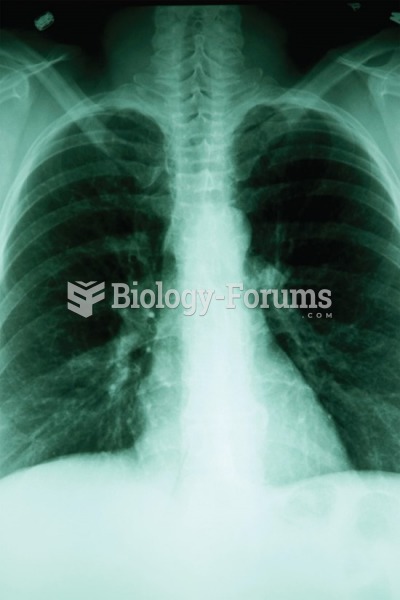Answer to Question 1
Correct Answer: 1
Rationale 1: Failure to mix the powdered form of this drug adequately can cause gastrointestinal tract obstruction.
Rationale 2: Gastrointestinal effects such as bloating and constipation are common side effects of cholestyramine. Since this drug binds with many other drugs in the gastrointestinal tract, suddenly stopping the drug could increase absorption of other drugs and lead to drug toxicity.
Rationale 3: Bile acid sequestrants such as cholestyramine are not systemically absorbed, and do not threaten kidney function.
Rationale 4: Cholestyramine can reduce absorption of fat-soluble vitamins, so supplementation with vitamins A and D might be necessary.
Global Rationale: Failure to mix the powdered form of this drug adequately can cause gastrointestinal tract obstruction. Gastrointestinal effects such as bloating and constipation are common side effects of cholestyramine. Since this drug binds with many other drugs in the gastrointestinal tract, suddenly stopping the drug could increase absorption of other drugs and lead to drug toxicity. Bile acid sequestrants such as cholestyramine are not systemically absorbed, and do not threaten kidney function. Cholestyramine can reduce absorption of fat-soluble vitamins, so supplementation with vitamins A and D might be necessary.
Answer to Question 2
Correct Answer: 3
Rationale 1: Absorption of avorstatin (Lipitor) is not inhibited by food in the gastrointestinal tract.
Rationale 2: Avorstatin (Lipitor) can increase serum digoxin levels significantly. Clients taking avorstatin (Lipitor) might need to decrease their dose of digoxin, and should have digoxin levels monitored frequently.
Rationale 3: Avorstatin is a pregnancy category X drug, and should be avoided by women of childbearing age who might become pregnant.
Rationale 4: Because cholesterol synthesis increases at night, drugs to treat lipid disorders are more effective if taken at bedtime.
Global Rationale: Avorstatin is a pregnancy category X drug, and should be avoided by women of childbearing age who might become pregnant. Absorption of avorstatin (Lipitor) is not inhibited by food in the gastrointestinal tract. Avorstatin (Lipitor) can increase serum digoxin levels significantly. Clients taking avorstatin (Lipitor) might need to decrease their dose of digoxin, and should have digoxin levels monitored frequently. Because cholesterol synthesis increases at night, drugs to treat lipid disorders are more effective if taken at bedtime.





